When introducing newcomers to the concept of "Web3", royalties on the blockchain were one of the pivotal talking points, and with good reason.
Creators earned $1.8 Billion in royalties during 2022, with $489 Million of that going to the top 10 projects in the space. It was big business and a major revenue driver.
The concept was simple: create perpetual demand and receive perpetual rewards…
Or at least it was supposed to be that way.
Marc Andreessen once said the internet's original sin was the failure to build payments into the internet's architecture from the beginning. I will go out on a limb here and say that the original sin of NFTs was not building royalties into NFTs from the offset.
This post will look at what happened to royalties, a recent exception to the rule, and the tailwinds that may bring them to the forefront of conversation (and trading) this year.
Any chart showing royalties over time will look a lot like this:
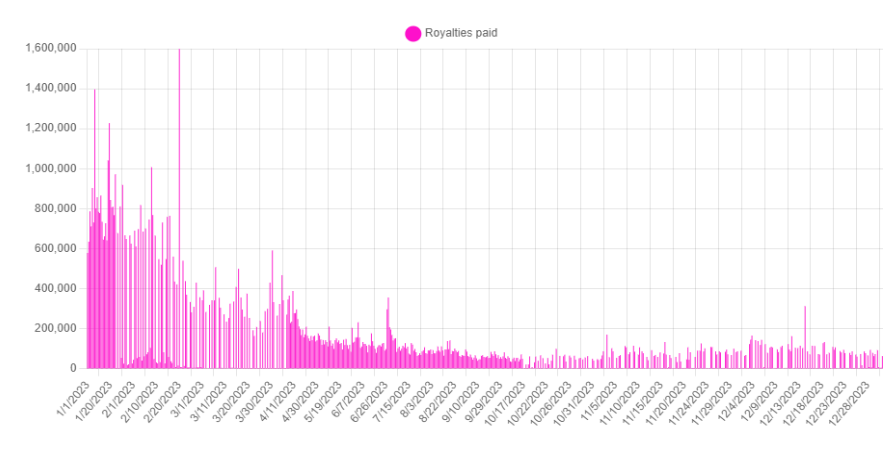
Down and to the right.. very down and to the right.
Here is a crash course on what happened with royalties, the marketplace wars, and some proposed solutions.
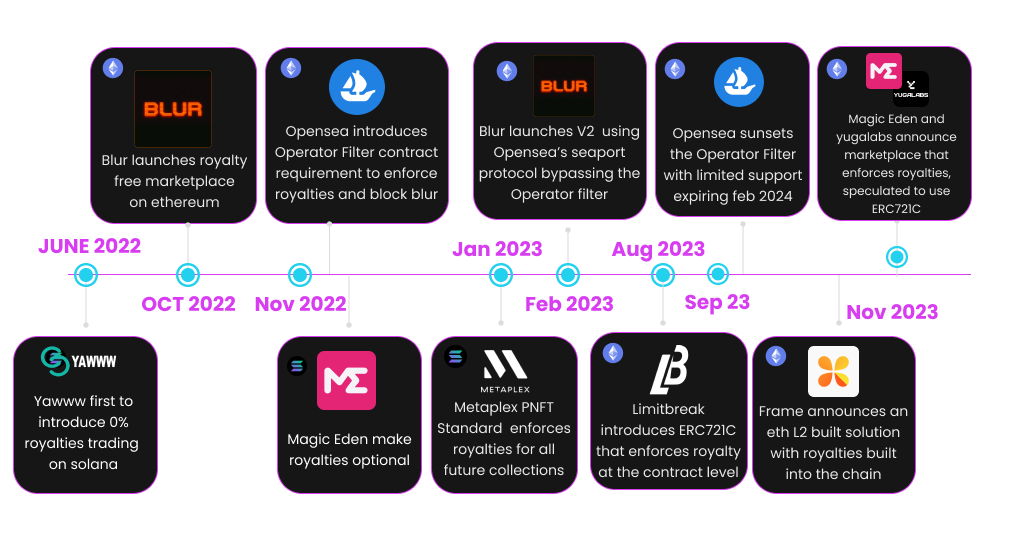
In summary:
Royalties became optional on both Ethereum and Solana marketplaces.
The Solana community quickly responded with a new standard to enforce royalties, which was widely adopted; royalties are no longer a contested issue on Solana.
Ethereum marketplaces used the turmoil to strong-arm each other with promises of royalty enforcement in return for loyalty, only later to give up on them entirely.
Various solutions have been proposed in the Ethereum ecosystem, from registries to new standards and even new chains.
We will dive into 2 of these solutions and how they already impact the space.
Let's look at a couple of projects' trading activities in 2023; one is not like the others.
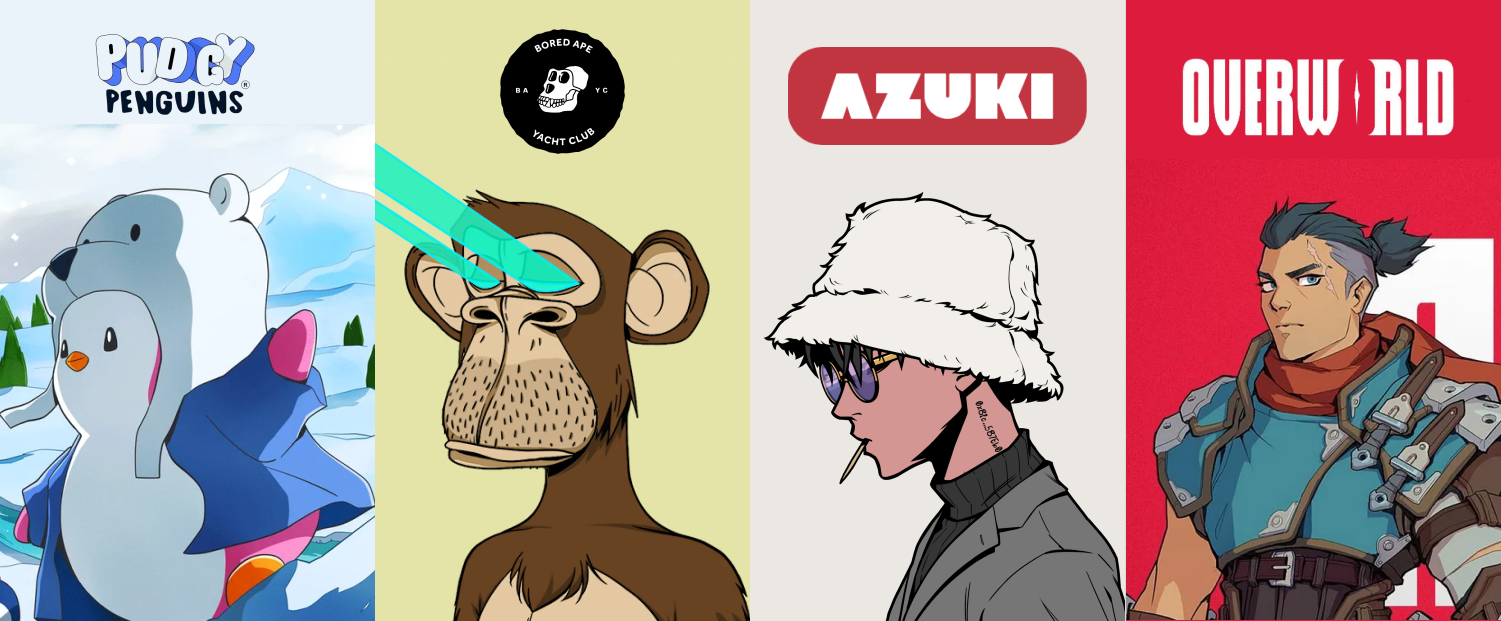
Only Overworld (Far right) hasn't lost millions of potential revenue due to optional royalties.
The following figures are derived from 2023 trading data; interestingly, Overworld launched on December 15th, allowing only two weeks of trading data to be used in these calculations.
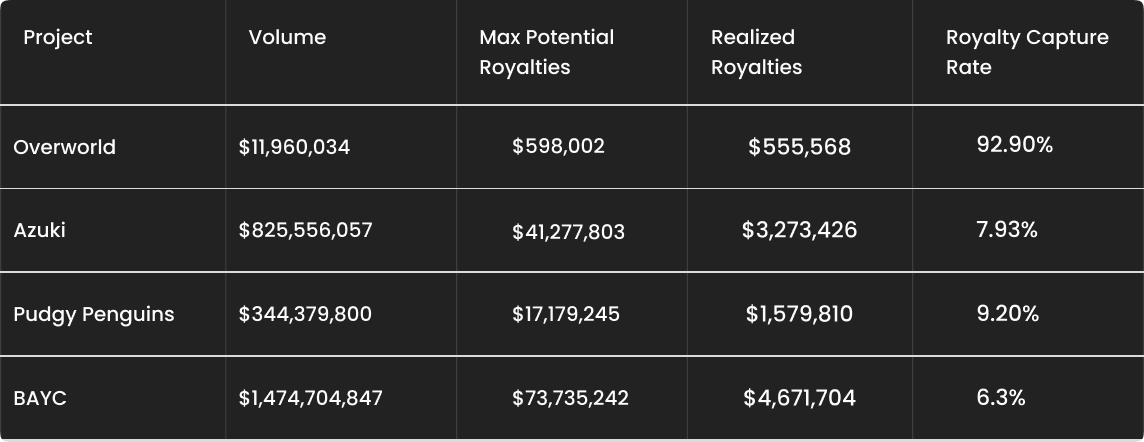
Overworld's massive lead in Royalty Capture Rate is particularly interesting; the lost revenue for the more established projects is pretty substantial, too.
There are 2 main drivers behind this massive lead in royalties captured.
1. Opensea agreed to enforce royalties exclusively.
2. The collection was initially not available to trade on Blur at launch.
The details of the agreement and the specificities around why the collection wasn't available for trading on Blur are unknown. However this combination of factors did garner plenty of attention and serves as a good point of reference for enforced royalties in 2024.
Several Overworld holders confirmed that they did not have the option to list on Opensea without creator royalties, even though the contract the team used did not meet Opensea requirements for enforced royalties - in fact, the team used LimitBreaks ERC721C standard.
In case you aren't familiar with LimitBreak, the team with a wealth of experience in the early days of mobile gaming raised $200m in 2021 on the vision that "free-to-own" will replace the "free-to-play" genre.
Within the space, LimitBreak is better known for its collection DigiDaigaku, which you may remember from the $7m Superbowl Commercial that the majority of users who scanned the code to earn an NFT were instead directed to the founder Gabriel's Twitter.
The DigiDaigaku ad aired during the Superbowl in 2023
Limitbreak introduced the ERC721C standard in mid-2023, its key features are:
Programmable Royalties range from enforcing royalties to shared royalties and even have a figuration for assigning royalty percentages to minters or transferring shares of the royalties to other users.
Adjustable Security Tiers that apply various rules to both the caller and the receiver depending on the active level.
Sounds great on the surface. However, the Achilles heel of the new standard is that it takes two to tango.
The ERC721C standard requires marketplace contracts to leverage the feature set to avail of the new features effectively. Currently, the only product in the market that does this is the LimitBreaks payment processor.
While the standard and the payment processor are open-source, both have been adopted sparsely until now. It is also heavily speculated and even stated by LimitBreak founder Gabriel that the Magic Eden and Yuga Labs collaboration to revive their ETH marketplace is using the new tools to enforce royalties.
What's interesting here is that teams like Overworld leveraging the standard can eject from optional royalties at any time by upgrading their security level and blocking incumbents like Opensea and Blur.
All they need is a safe haven to move to, which might be Magic Eden.
While the solution is far from perfect, the lost revenue figures from projects that the shift in royalty enforcement has impacted provide ample reason to consider the solution.
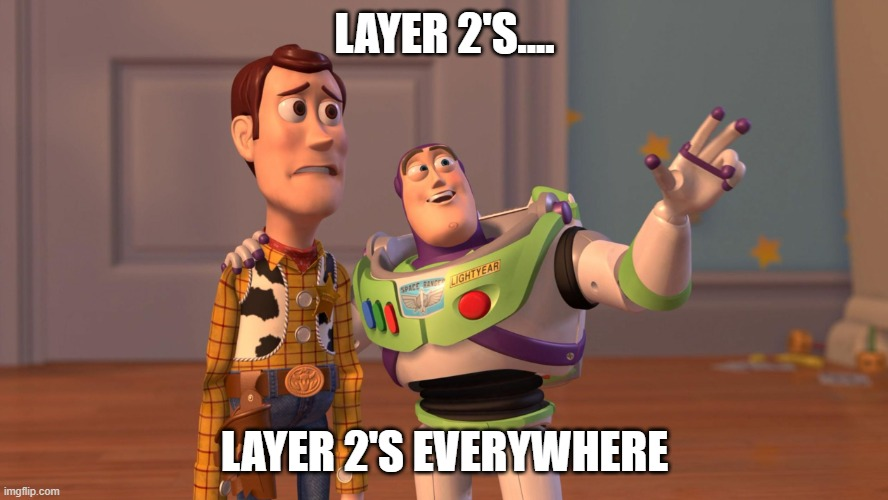
The next solution we will look at is the new Layer 2, Frame. It was launched by a team of prominent developers and crypto Twitter voices, and built on the Arbitrium Nitro stack.
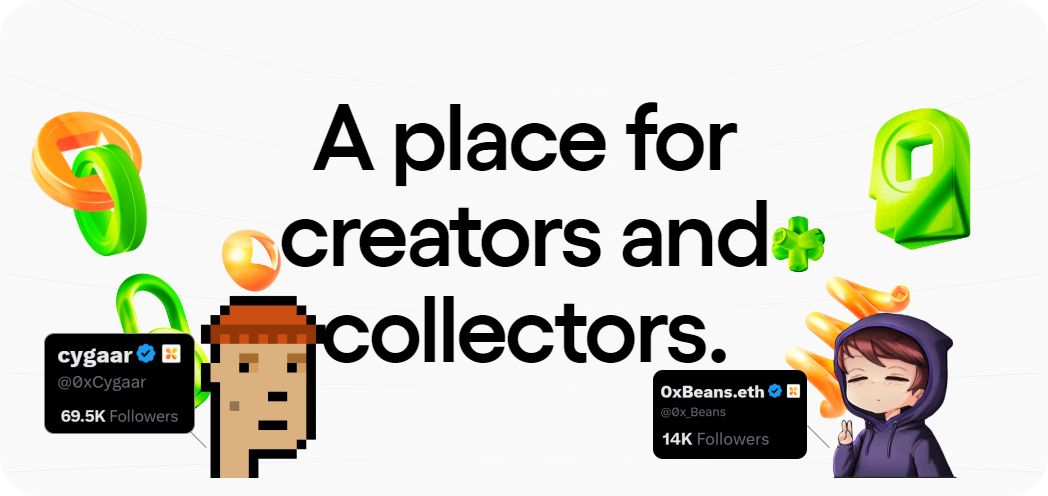
The team has set out to build an NFT-first orientated chain, making optimizations at the chain level to increase the quality of NFT-based UX and reduce the cost of critical features to create the optimal experience.
Two key innovations at the base layer are:
Native wallet delegation, is a feature where you can assign utility rights of an NFT to another wallet address. This delegated address can now access anything that NFT enabled without holding the asset in the same wallet. Made possible via the native integration of Delegate.xyz, which popularized the pattern to prevent malicious apps from stealing high-valued assets from users.
The Palette Protocol is designed to provide network-wide onchain liquidity and native royalty enforcement. Based on currently released information, Palette combines a seaport-like protocol and the open sea-inspired operator filter embedded at the network level.

If you haven't heard of Frame but have at one point traded NFTs on a marketplace, you qualify for their airdrop, which you can claim anytime before the Frame Mainnet launch on January 31st.
Frame and their approach with Palette brings us full circle from the opening statement that the original sin of NFTs may have been not building royalties from the beginning.
Nike recently stated in their .SWOOSH update that they will allow holders to export collectibles to their own wallets, and also specified that collectibles will be available for trading on marketplaces that enforce royalties.
The return of royalties is a trend that will inevitably grow in the coming year.
Royalties play a big of a role in the broader perspective of business and creator considerations; the opportunity is too big and too important not to be solved.
LimitBreak's ERC721C/Payment Processor and Frame's new NFT and royalty-friendly blockchain are just two of the most timely solutions to the royalty problem.
Either way, I am optimistic that royalties will return in various shapes and sizes throughout 2024.